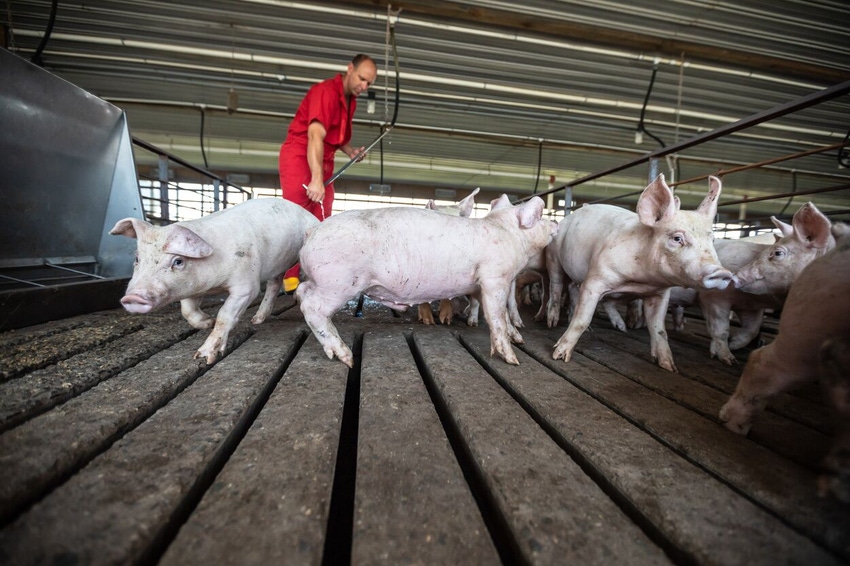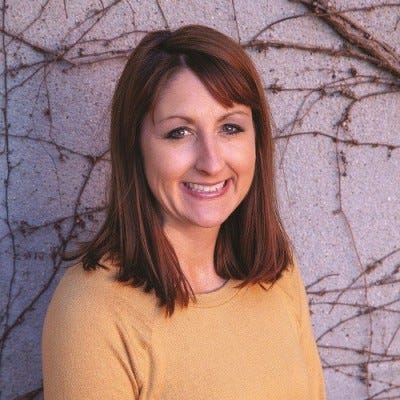Five technologies available now for pork producers
Holt says technology never going to replace a person in the barn but can help that person do a better job.

When it comes to adopting to new technologies on farm, Jonathan Holt says it's important to remember the next generation of workers in the swine industry, and even many employees today, have always been connected to the internet.
"They've always had digital technologies in their hands and so our industry needs to embrace it if we're going to keep moving forward," says the North Carolina State University assistant professor and swine Extension specialist.
In the last few years, several new products have been introduced to the industry. During the recent NC State Swine Innovation Forum, Holt noted four emerging technologies that are available today and can easily be implemented on farm:
Cough monitor- This technology uses a microphone, which is placed in pens, to identify and track coughing events. Because producers are not in the barn all day every day, Holt says these monitors are useful for collecting data on pig behavior and pig sounds.
"The data behind these show that they're able to pick up respiratory problems before being clinically diagnosed by a veterinarian, sometimes within two to three days before a veterinarian or a staff person would recognize a cough," Holt says.
In addition to respiratory problems, the monitors can indicate ventilation issues.
Another area Holt has seen the sound and cough monitors being used is for taking people attendance in the barn.
"Most of us know that when you go into a barn of pigs, you usually get them up. Those pigs make sounds, the movements of the pigs create some noise in the barn," Holt says. "There's some places that can say 'I know when the weight crew showed up, I know when the vaccine crew showed up because the sound monitor was telling me.' Or alternatively, 'I know that no one showed up that day because I didn't pick up anything on the sound monitor.'"
ECHO- A technology from SwineTech that prevents crushing by monitoring squeals and sending a signal to get the sow to stand.
"There's basically a device mounted on the farrowing stall walls that's picking up the sound and it's a certain frequency of a squeal, a loud noise," Holt says. "It sends a signal to a device that vibrates on the sow. It's just a little patch that she's wearing on her side and that stirs the sow a little bit to force it to get up."
According to Holt, research has showed a 70% reduction in crushing. Another study found the technology was more effective than a person trying to tap or move the sow themselves.
Estrus detection- This technology uses behavior monitoring in the breeding crate to predict estrus and the best time for insemination. While Holt is not aware of this being implemented in the United States, the technology is being used on some farms in Europe.
"What this camera is looking for is a change," Holt says. "The camera is mounted over the head of the sow and it's looking for changes in their ear movements, and so a little bit on behavior of estrus again, sometimes standing in heat, ears may go erect."
While there may be some breed differences in that behavior and the camera may not have the best accuracy rate, Holt says this is one area that requires the most training on farm, so any technology that can aid in monitoring estrus is beneficial.
"We're never going to replace a person in the barn, but can we help that person do their job a little better and I think that's where a lot of these technologies are at today, not replacing people but helping them do their job better," Holt says.
Geofence-based feed traceability- Hardware and software monitor travel of feed trucks to multiple locations and can even monitor the feed bin for correct delivery.
"This technology can track those feed deliveries, but can also, depending on what kind of perimeter you want to set up, it can track where that truck has gone previously to entering your farm and if you want to set it up you can also track its route back," Holt says. "When we talk about the potential of foreign animal disease outbreaks, tracking where vehicles are going in and out of your property before and after is going to be really important."
Image analysis- This technology system uses an infrared camera that can be connected to a cell phone to monitor behavior as well as temperature in the barn. One way NC State is using image analysis is to look at potential indicators of welfare by measuring tear staining on nursery pigs. Similar to dogs, pigs also develop tear staining in response to stress in certain situations, Holt says.
"We are measuring the size," Holt says. "By using a camera and image analysis, to measure the amount of tear staining on pigs and also the ammonia levels in the room, in the different rooms of the nursery barn, and then looking at the amount of tear staining versus the stress on the environment there for those pigs."
While that data is still being gathered, Holt says he doesn't think image analysis technology will go away anytime soon. NC State has also been involved in project funded by the National Pork Board, examining the use of image analysis to develop rapid and accurate assessment of pig body weights.
"Our idea here when this started was to predict market weights of pigs and we quickly learned that there's some other ideas around where we would like to identify weights of pigs," Holt says. "So, you know as a nutritionist, I know that usually when we place a group of pigs if my feed curve is on. I'm pretty good at predicting at least that first cut coming out of the barn and so there's been some interesting conversations being had on maybe we want to use these weight assessment devices for small pigs more on the other end of the line and also identifying our replacement gilts and weights of replacement gilts."
Holt acknowledges there have been some questions regarding weight accuracy and age of the pig but points out the human eye isn’t 100% either. In fact at two different sites, the NC State team recently put human observation to test.
First staff sorted the pigs and marked them in one of four different weight categories: cull (less than 200 pounds), light (over 200 lbs. but not ready for market), market (270 to 290 lbs.) and heavy (more than 290 lbs.). The next day the pigs were weighed to determine how accurate the staff was with their markings. At site one, the staff had marked 140 pigs ready for market, however the data showed they were only 42% accurate. At the second site 195 pigs were marked as market weight, a 76% accuracy rate.
"They did a really good job at heavies, and they did a really good job at lights, but kind of missing in the middle, and when we think about sort loss economics, there's a lot of money put on the table when you're missing these cuts," Holt says. "Because when you take these pigs out to market that sets up your next market day and if you're off by a day or two you know now you either are heavier or light on your next load and so there's a lot of room for improvement here on how we're marketing pigs today."
While NC State has not conducted research on the image analysis handheld devices, they have done some work with mounted cameras through PigVision from Asimetrix. A camera was placed in every pen to observe pigs on an hourly basis, taking images of the pigs and sending back up to the cloud to predict weights and give a daily reading on what average pig weight per pen was in that barn.
"We placed these pigs at about 50 pounds coming out of the nursery, put them right in on the PigVision cameras," Holt says. "When we went in, we didn't tell them the weights even though they really wanted to know but we wanted to see what the cameras could do."
The weight accuracy continued to get better over time and by market weight time the cameras were anywhere from 96 to 98% accurate. Holt says the cameras are not promoted for use with small pigs but their results demonstrated that by market time, the weights were being predicted very close to accurate.
Holt says he often gets asked do you need a camera in the barn every day and do you need it on every pen of pigs? That’s one of the next research areas he plans to address as to how many are needed to accurately determine market weights.
Another part of the project was to test vision image technology versus human observation as well against a walk across scale device. In this study, Holt notes the person that marked pigs was more familiar with the barn and familiar with the pigs, but was not in the barn for feeding before pigs were marked.
"We did a little bit better on our human observation side but for that walk across scale, very accurate at predicting weights overall from all the weight classes, about 98%," Holt says. "PigVision back in there about 96% which we saw in other tests and still doing better than a human."
Holt says no matter what technology producers choose to adopt on farm, it’s really an opportunity to help them do their job better.
"Some of these technologies, such as the weight assessment technologies, are more accurate than a human so you know we might have to check our pride some days at the door and admit that the computer can do a little bit better than we can," Holt says.
"It would be really great if all these technologies would allow talking amongst themselves. We've got feed tracking devices, we've got weight tracking devices, we've got water tracking and they're all a separate system that wants to be housed on a separate computer that goes to somebody else's cloud, and so if they're not talking to each other in the barn, we're not going to get to that level of the computers making decisions for us and so I think that's an obstacle that all of those groups have to start working together to help benefit us all."
About the Author(s)
You May Also Like





